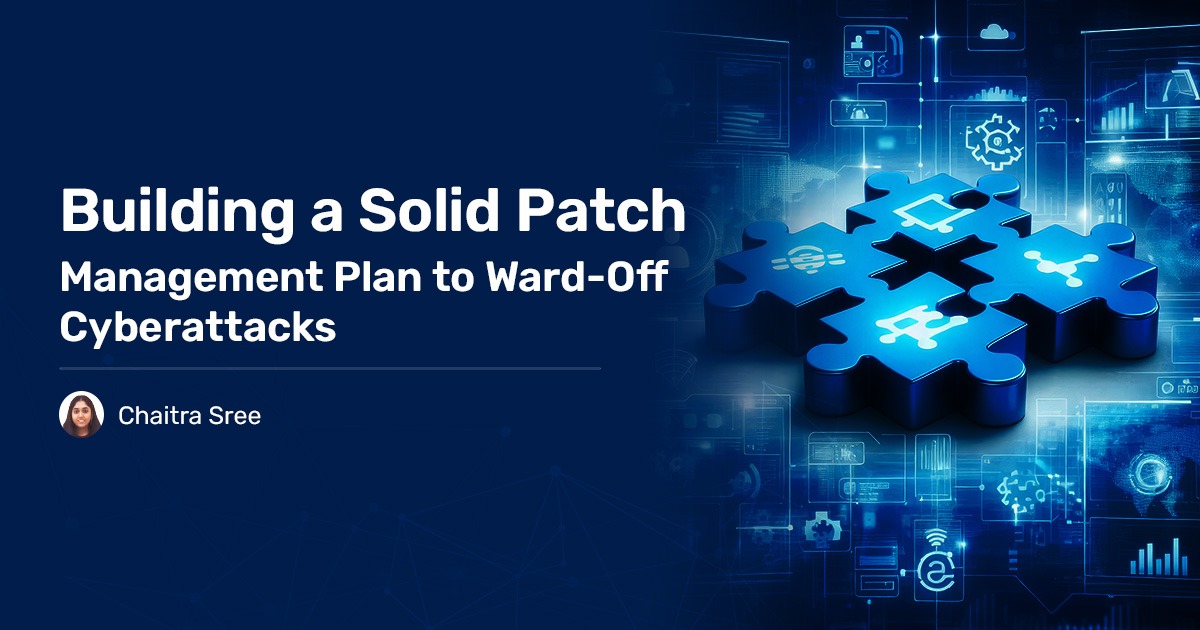Handling security in today’s cybersecurity landscape is definitely not easy!
To keep enterprises running smoothly and efficiently, regular monitoring of IT networks is a must. This is where the concept of having a vulnerability and patch management comes into the picture.
Alongside continuous IT monitoring, we should adopt a regular remediation process. Implementing a patch management solution that identifies risks and fixes instantly will not allow cyber attackers to catch up.
By systematically updating software and systems, you not only enhance security but also optimize performance and prevent disruptions that impact operations. Think of it as investing in the long-term health of your IT environment, ensuring that everything runs seamlessly and securely.
In order to streamline this process more, creating a patch management plan is helpful! Let’s dig deeper and craft an ideal plan for staying ahead of attacks.
6 Things to Keep in Mind While Building a Patch Management Plan
1. Have a comprehensive overview of organizational assets:
To detect risks more accurately, having a list of all assets in your IT infrastructure is essential. Vulnerability scanners cannot detect risks if the assets are not listed. Therefore, have a 360-degree visibility of your IT assets for more accurate vulnerability detection.
2. Get information about patches and vulnerabilities in a single console:
Using siloed(multiple) tools to get information on vulnerabilities, misconfigurations, anomalies, and other security risks is not ideal. Going through every vulnerability individually and searching for patches through another tool takes time and makes the process tedious.
While building your patch management plan, ensure that you have integrated patch management with vulnerability management software so that obtaining information about risks and patches is easy with a unified console and be deployed with just a click of a button.
3. Prioritize the patches:
It is a significant step to include in your patch management plan.
Without a doubt, trying to patch millions of patches will be hectic. Prioritizing them based on their risk levels, CVSS scores, high-fidelity attacks, business context, technical impact, and other factors will remediate critical ones on priority.
4. Test before deploying:
There are a few scenarios where a malfunction would have occurred after deploying the patches in the production environment. This malfunction is capable of washing out the application and sensitive data.
To avoid situations like these, always test your patches in a non-production environment and see if that would cause any errors before deploying patches directly in a production environment.
5. Automate the patch management process:
The traditional way of managing patches is long gone and no longer adequate for all the complex cyber-attacks of recent times. Therefore, it’s a necessity to include the process of automating patch management in your patch management plan to stay ahead of cyberattacks.
6. Report your findings:
Insightful reports are vital when it’s time for auditing. It can also be helpful to measure the success of your patch management process. Do thorough research and choose software to give customized reports based on requirements.
Benefits of Patch Management Plan
Here are some key benefits of creating patch management plan
1. Enhanced Security: Regularly applying patches protects your systems from risks. This reduces the chances of security breaches, data loss, and other cyber threats.
2. System Stability: Patches often include bug fixes and improvements that can enhance system stability and performance. This prevents crashes, slowdowns, and other issues that can impact productivity.
3. Better User Experience: Keeping software up to date ensures that users benefit from the latest features, improvements, and security enhancements, leading to a better overall experience.
4. Risk Management: A structured patch management plan aids in assessing and mitigating risks associated with risks, ensuring that you address potential threats before they can be exploited.
Conclusion
Patch management is a critical component of an enterprise cybersecurity strategy. A comprehensive patch management plan should outline the procedures and processes for identifying, testing, and deploying patches in a controlled and timely manner. Effective patch management is crucial for maintaining the security of systems with a patch management tool by reducing the risk of data breaches and ensuring that software applications perform optimally.


